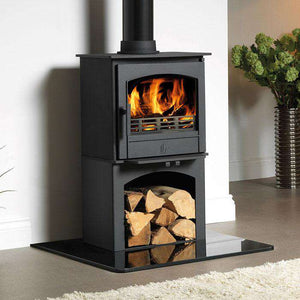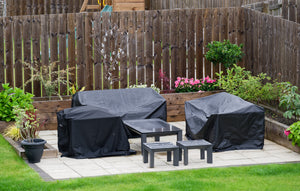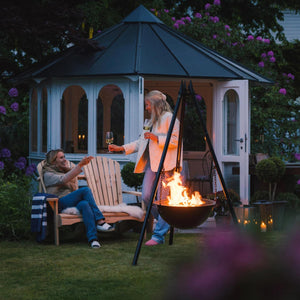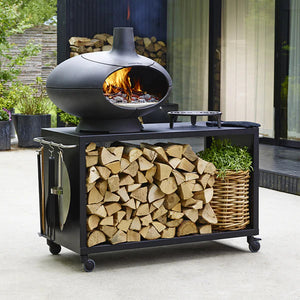Wood Burning Stove Maintenance: What do I need to do?

It’s getting to that time of year where the warmer weather looks like it might be around to stay, and you may be thinking about giving your stove a summer cleaning while you’re no longer using it regularly.
We may have already covered the best way to clean your wood burning or multi-fuel stove during prolonged periods of non-use, but how else can you care for your stove to ensure that it continues to function for a long time?
Clean the Stove Glass
While most modern stoves are fitted with airwash systems which continually keep the stove glass clean, it is always good to give the glass a good clean when it is not being used for a while. This will remove any dust or grime that builds up while it is out of use.
Cleaning the stove glass also gives you the opportunity to check that the glass is intact and that it has not suffered any cracks or damage over the winter months. Glass can become easily damaged if rope seals wear down, or if a door is closed too heavily. Should you need to replace your stove glass, we have a wide range of heat resistant stove glass to suit almost every appliance, specially manufactured for wood burning, multi-fuel, gas and electric stoves.

Check for Rust
Again, this is not a typical problem of many modern stoves, but it is something that you should keep an eye on nevertheless. Not only is rust something that spoils the look of a wood burning stove, it is something that can ruin the quality and performance of your stove. If it is not something that is nipped in the bud quickly it can spread and can lead to your stove having a shorter life than you may want.
Rust can be caused by regularly heating pans of water on the top of the stove, or exposing the stove body to moisture for prolonged periods of time.
The best way to remove rust from your stove is using steel wool, moving it against the surface in a circular motion. Once the stove has been removed, wipe the stove body down with a damp cloth and let it dry completely. If you wish to reapply paint to the stove body, ensure that your stove is completely dry before application – otherwise, the paint may not apply properly!
Check the baffle/throat plate
The baffle or throat plate is a component of your stove that sits directly above the firebox and takes the brunt of the heat from the fire. It protects the top casting of the appliance but also reduces the heat emissions up your flue/chimney.

Parkray 99 Baffle and Throat Plate - £64.00
This is a particular soot-trap and is a key spot to check for dust and deposit build up. Not only will this make your stove less efficient, it is also potentially very dangerous should the build-up get too heavy. Cleaning your baffle or throat plate on a regular basis is important to prevent this from happening.
Due to the levels of heat, they are exposed to, over time a baffle or throat plate may buckle or burn out. Depending on how these are fitted in the stove this may cause them to become loose or fall into the firebox. If this part of your stove is loose or damaged, you should not burn your stove and you should consider replacing it. The best time of year to do this is during summer when your stove will be out of action for a few weeks.
Check rope seals
Rope seals are incredibly important for ensuring your wood burning stove continues to burn at its full efficiency. Over time, this rope can become worn or squashed. The seal around the door which ensures that it closes properly and prevents any air from getting into the stove needs to be checked on a regular basis to ensure maximum performance from your stove.
To test the rope seal, try putting a piece of paper between the door and stove body and closing the door. If you can easily pull the paper out, that means it’s time to replace the rope seal!

We stock a number of different rope seals here at Stove Supermarket, starting from 4mm in diameter to 25mm in diameter in certain colours, along with the heat resistant Hotspot Heatbond Adhesive that you can use to attach the rope to the door.
Let the stove breathe
A good piece of advice over summer months is to allow your stove time to breathe. If you’re not planning on lighting your stove for a prolonged period of time, it is a good idea to leave the door ajar to allow air to flow throughout the stove and the chimney. This helps to prevent rust and corrosion by drying out any moisture that may build up.
- Stove Reviews









